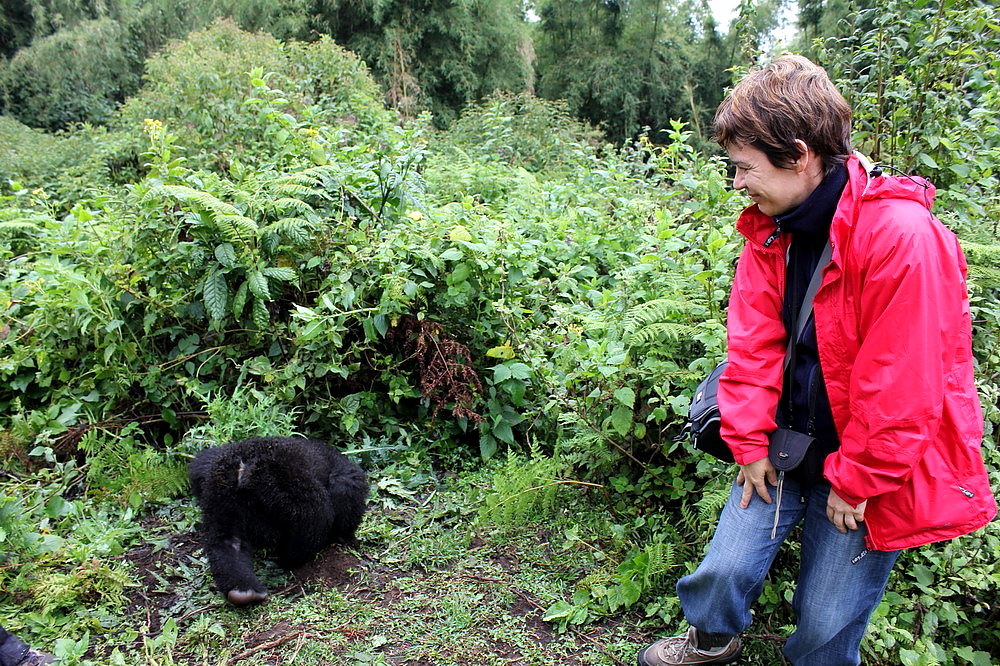No reading, photography or instruction prepares you for the moment when you first encounter a 200-kilogram, silverback gorilla. The encounter with these magnificent animals was the absolute highlight of my trip through Rwanda and Uganda.
Only 710
In the world there are only about 710 mountain gorillas living in the wild, in the thick forests of Rwanda, Uganda and the Democratic Republic of Congo. These countries are not among the most popular tourist hotspots. However, thousands of people come to this area every year, mainly because of the critically endangered mountain gorillas.
To visit the gorillas is restricted at several levels: a maximum group of eight people can visit any family per day, for up to an hour. The restriction is necessary to make sure that the stress level of the animals does not increase too much, as that can lead to a weakening of the immune system. Based on the number of families, the number of permits issued per day is 72 in Rwanda and 40 in Uganda. The demand is always greater than supply, so the license must be booked months in advance. The prices reflect the short supply: a visit in Rwanda costs USD 750, while in Uganda USD 500. (The price of permit was included in my tour cost with Exodus)
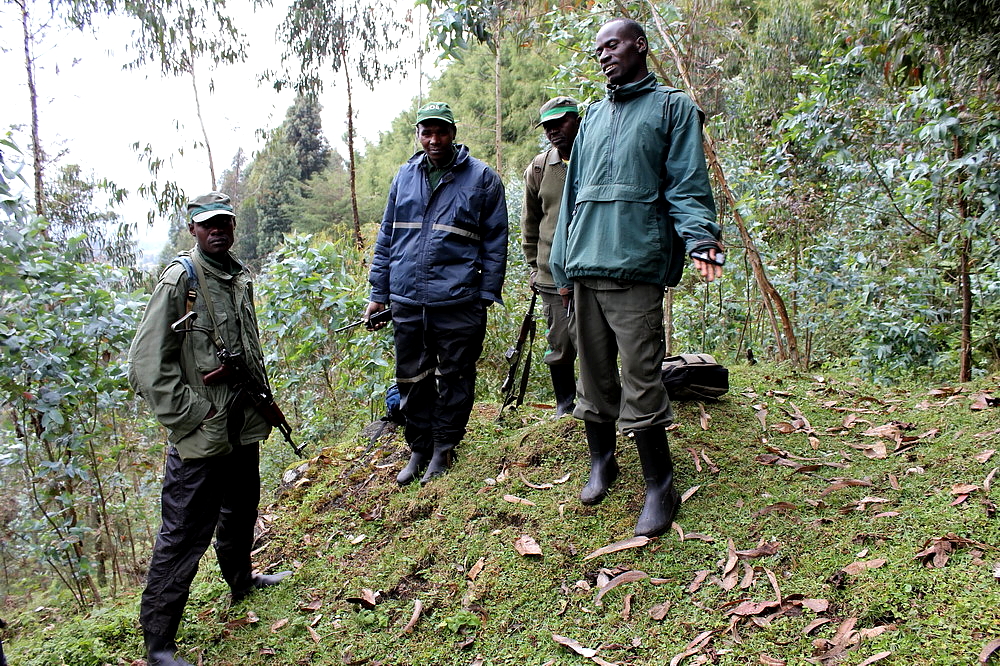
If you think that this money will buy you a red carpet trip in front of the gorillas, you are mistaken: you need to visit the gorilla families in the rainforests with no trails, so you have to cut your way between the prickly branches. The good news is that the permission almost guarantees you to meet them, because the National Parks staff constantly monitor their movements – not only to lead the tourists to visit them, but also as a precaution. Some poachers still shoot these magnificent animals, as in certain countries, for example in China, people still produce ashtrays from the paws of gorillas.
Striking similarities
The mountain gorillas share 97 percent of our DNA. On one hand, the similarities to us are striking; on the other hand, it is easy for them to catch human diseases. Therefore, we received detailed instructions before our departure to prevent infections. We could not approach them closer than seven meters, and we would have to sneeze turning away and into a piece of cloth. Litter must be avoided, and if we had to go to the toilet in the bush, we would have to dig a hole and bury it. Flash photograph is prohibited, to avoid scaring them. Contrary to popular belief and King Kong movies, gorillas are explicitly gentle, passive creatures. In addition, they are vegetarians, so we did not have to worry too much.
Only with armed guards
After the little training, we started the trek. First we walked in an open field, and then soon we reached the rainforest, where we had to follow our guide who cut the way with a large, sharp knife into the bush. We had an armed escort as well, not because of the harmless gorillas, but rather to protect us from other dangerous animals such as the buffalo. Suddenly, our guide stopped. He could already see what we could not yet. He motioned to silence us, and issued a growling sound to warn the gorillas we approached.
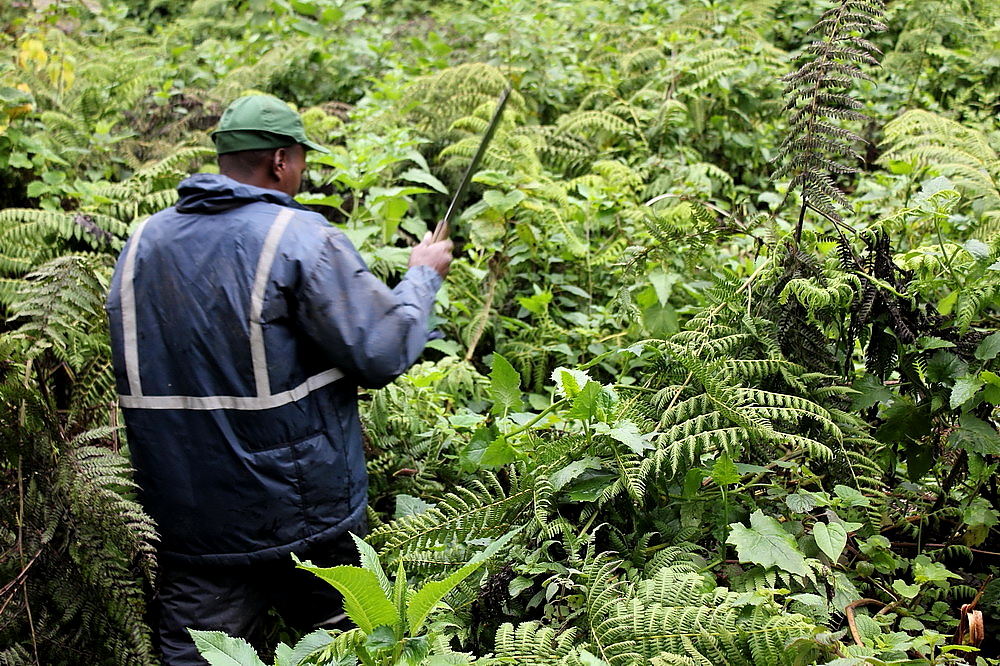
The first encounter with a silverback is beyond all imagination.
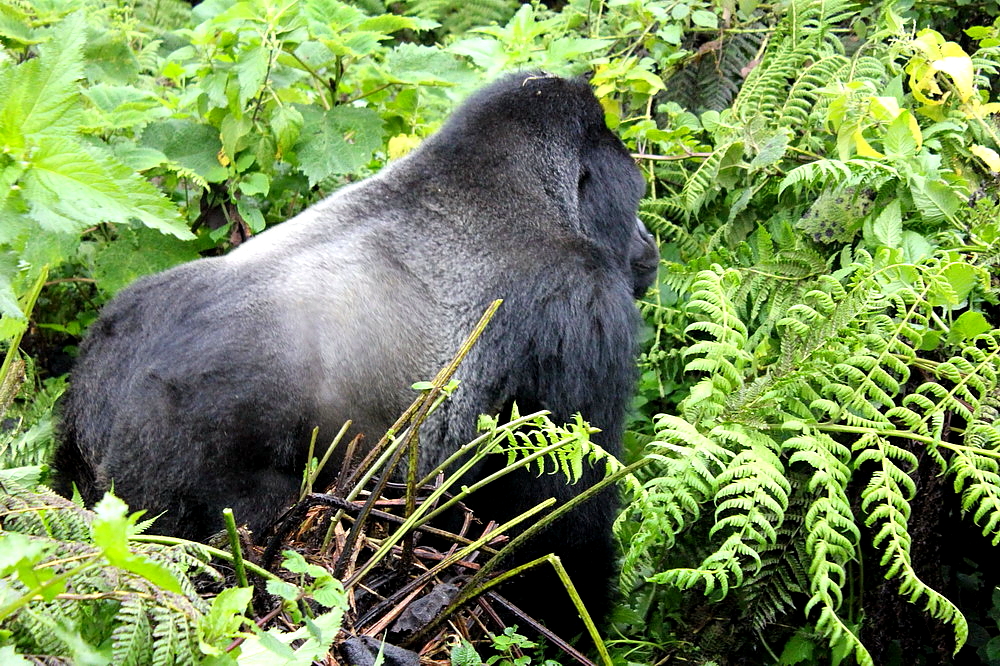
First we saw Lucky, the head of the family. He apparently did not mind that we visited his home – he was peacefully munching the bamboo branches.
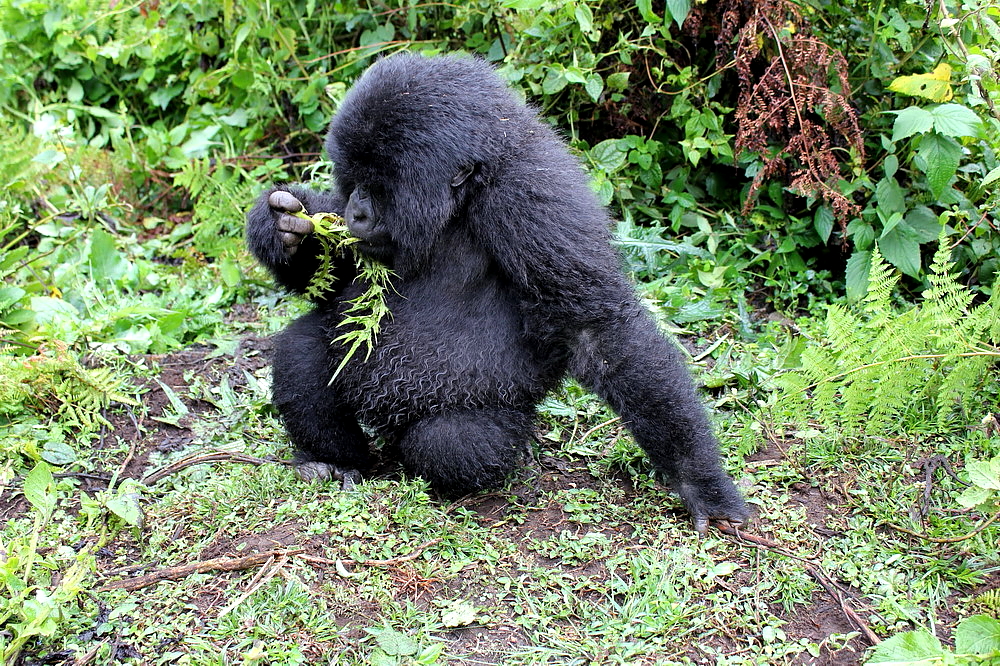
Soon we saw one mom with a two-day old, tiny (half kilogram) baby, and soon emerging from the forest came some more young gorillas.
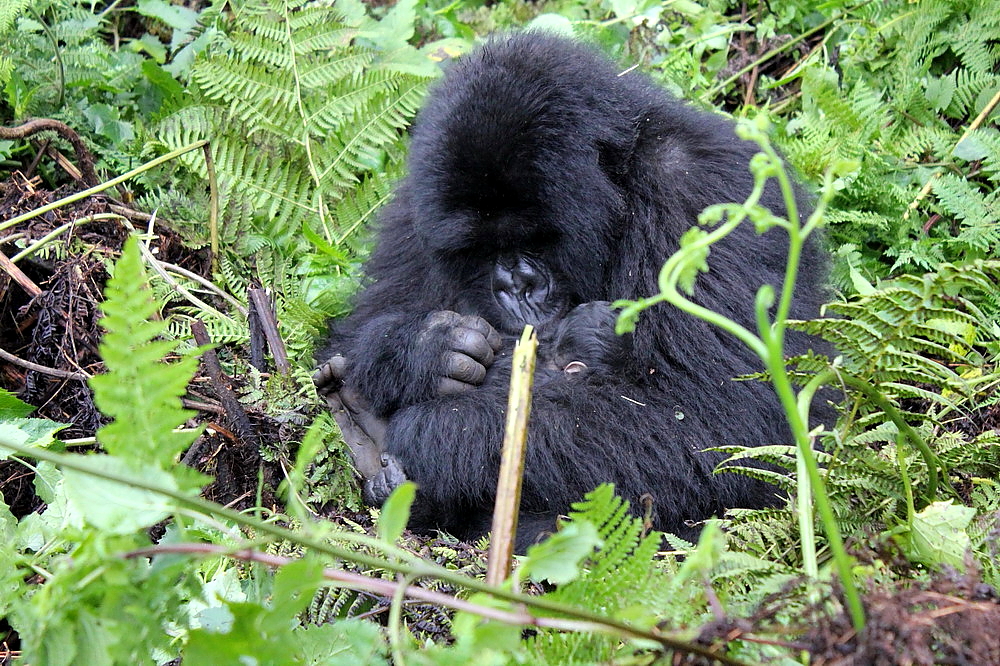
At first, we could hardly take pictures of the family because of the high grass, but they became increasingly brave and started to walk towards us. Since they did not attend the training about the 7-meter rule, they ventured closer and closer. As far as we could, we tracked back, but after a while we reached the dense bush, and had to face them only from 1-2 meters.
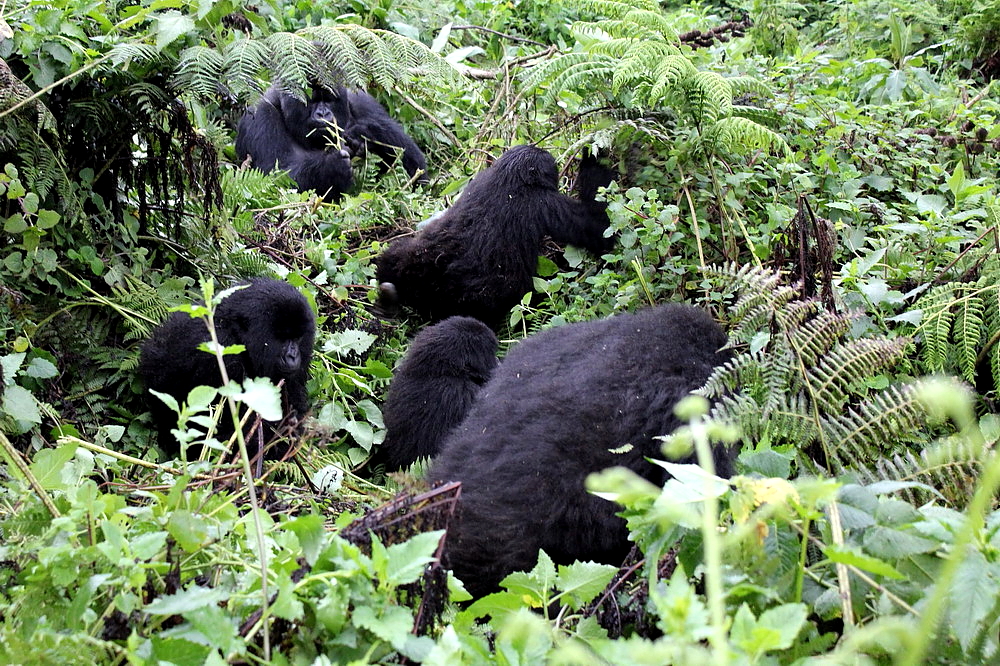
No fear, but joy
Interestingly, I did not feel fear at all, just joy and deep emotion. Lucky, the male, had five females and six children, and soon they were all playing around us. In the meantime, it started raining. I was knee-deep in mud and covered with small bloody injuries from the thorns despite my thick pants, closed shoes and sturdy gardening gloves. But nothing mattered – we were mesmerized. When we woke up from the first shock, all cameras clicked – especially when the gorilla kids ventured into more open fields, and had a hell of a great time playing there.
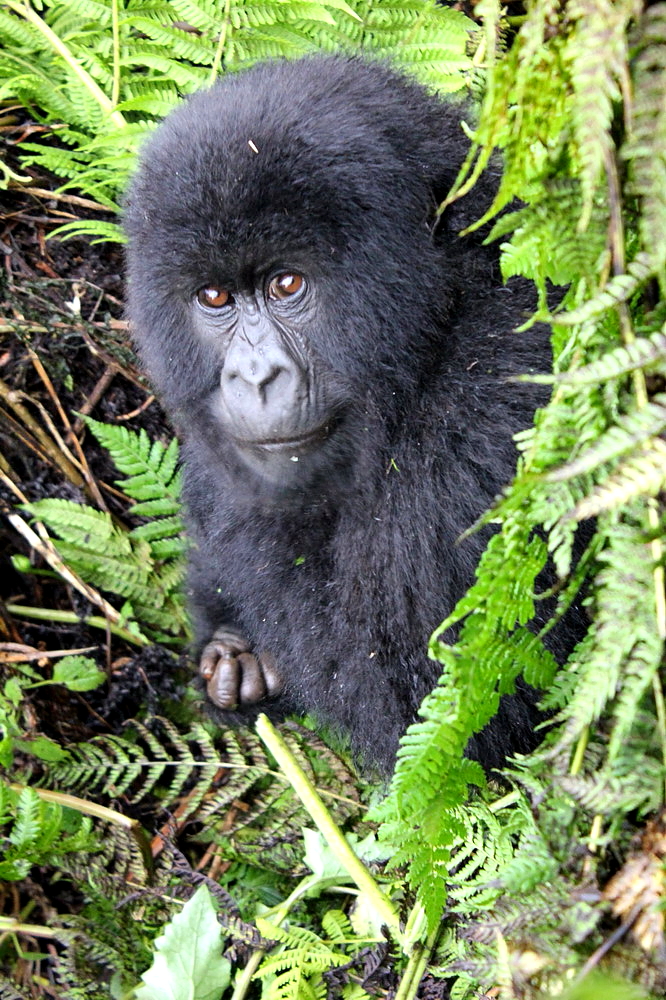
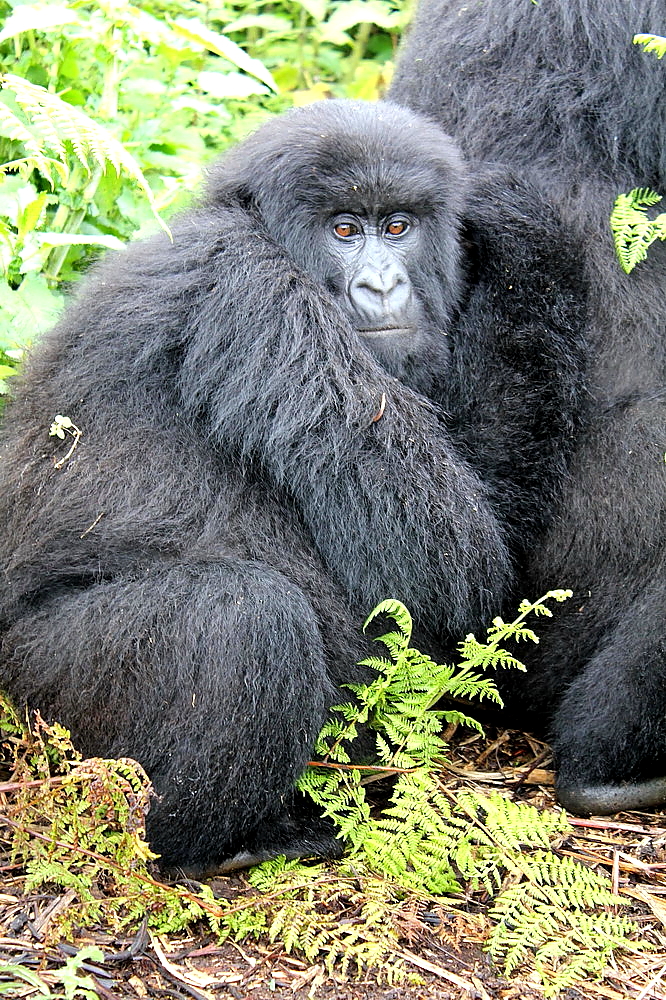
In the meantime, they were continuously eating. The gorillas consume 30 kilograms of bamboo a day and try to extract the liquid from the plants. They communicate with facial expressions, gestures, and two dozen sounds. The rangers differentiate the individuals from their nose pattern, as that is the most characteristic trait of them. Each gorilla has a name. A large baptism ceremony, called Kwita Izina is held once a year. In recent years, this event has become increasingly popular, and the names of important public figures are given to newborns. The baptism day is celebrated across the country, ranging from small local parties to a large, chic reception held in the capital.
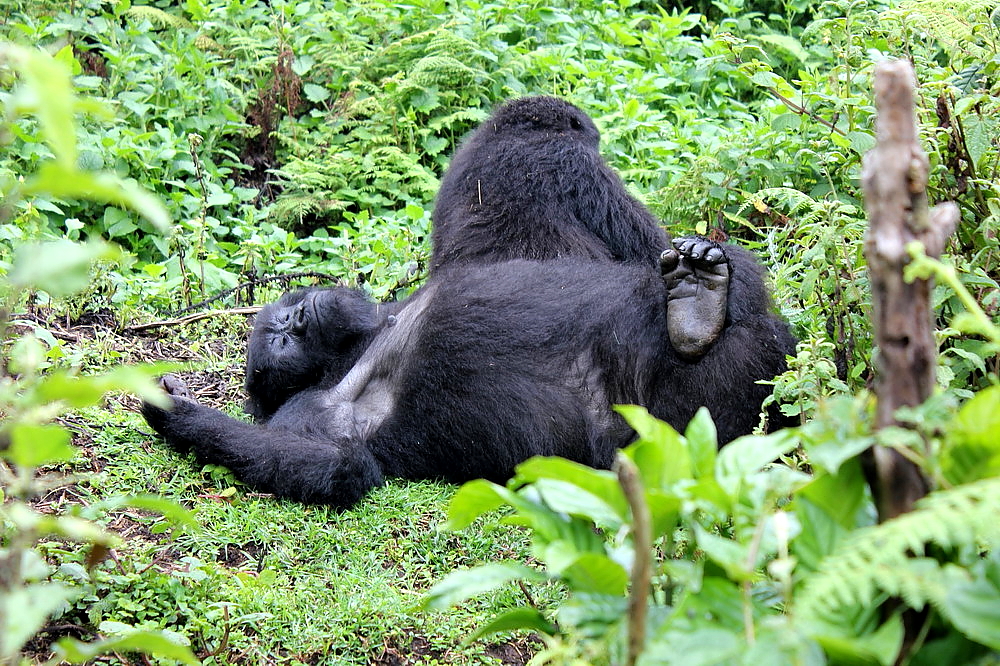

In line with the rules, we spent only an hour with the gorillas. Then unfortunately had to go back to the camp. Along the way, we could hardly believe what an experience we had. I wished I could have immediately organized a tour for the next day as well. Unfortunately, that did not fit either my time frame or budget. However, I met several people who specifically came to the country for these visits. In our group there was an American couple who bought licenses several months ago for five consecutive days to visit five different families. For years, they saved money just for this purpose and now their joy was boundless. Just like mine. It was a real life-long experience which only a lucky few can witness.
